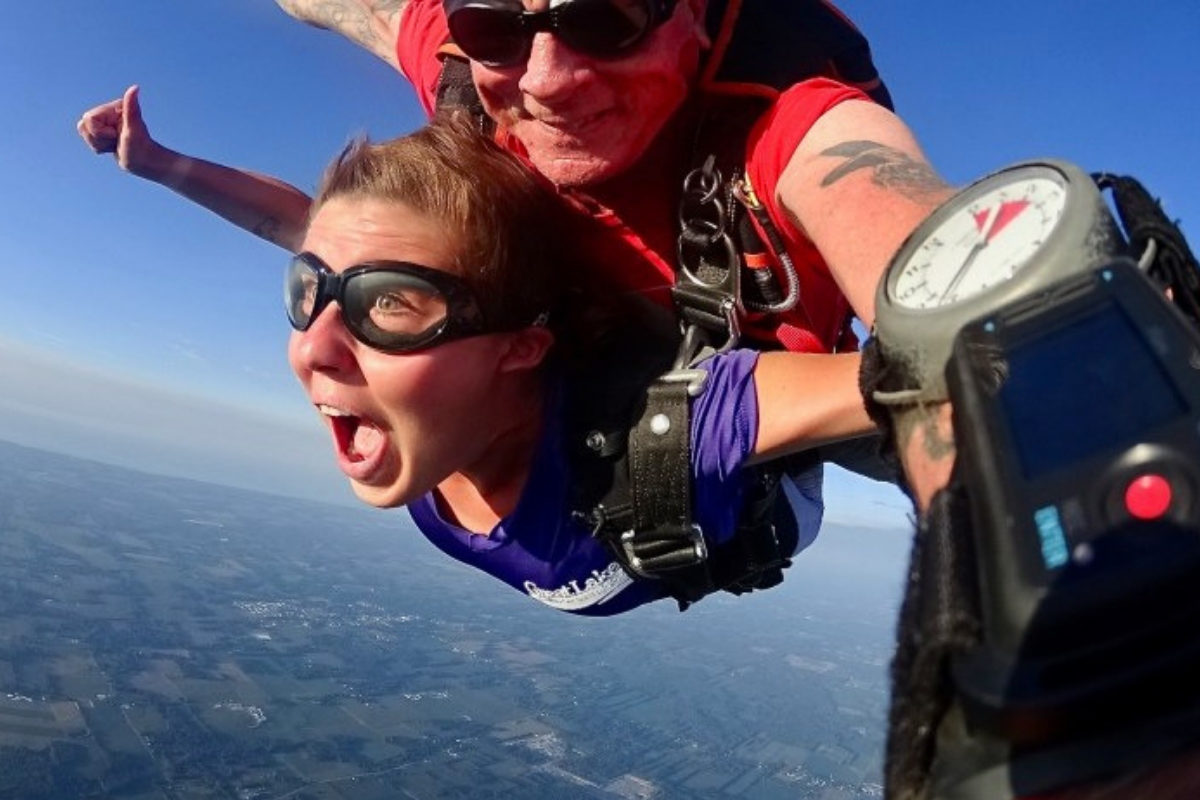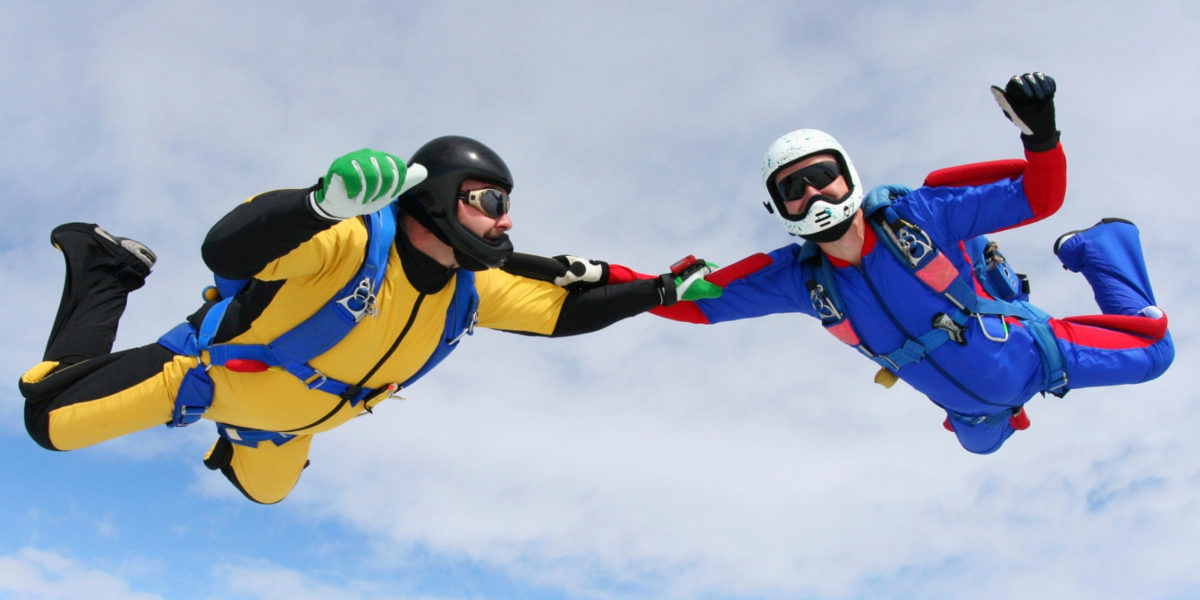Wanna be a skydiver, or maybe just learn what it takes to earn your wings? Similar to other activities, skydiving has leveled tiers – in this case, four skydiving licenses – which demonstrate experience and skills proficiency. To earn your skydiving certification, you are first a student, then a solo student, and then an A License candidate. If you want to keep soaring, you can go on to pursue the license requirements for B, C, and D certification.
Tandem Progression
Before earning any skydiving license, the first step is to go through our student program. At WNY Skydiving, we start with a tandem progression, which requires that you complete two tandem skydives (where you’re strapped to an instructor).
For your first tandem skydive, you gain an introduction to the sport, learn about the process of riding and exiting the plane, and focus on maintaining the correct body position in freefall.
During your second tandem skydive, you are responsible for keeping an eye on your altimeter and deploying the parachute on behalf of you and your instructor. Should you fail to deploy the chute for whatever reason, your instructor will pull it for you!

First Jump Course
Once you’ve completed your tandem progression, the next step is to move on to an eight-hour ground training session called the First Jump Course. In this ground school, you learn the basics of skydiving, including gear information, how to pack your parachute, emergency procedures, how to land your parachute, and anything else you’ll need to know when making your first non-tandem skydive.
Accelerated Free Fall
After completing the First Jump Course, you can start our Accelerated Free Fall Course (AFF). In AFF, you follow a six-jump progression designed to instill a variety of skills and maneuvers. At first, you’ll have instructors flying with you in freefall, but you won’t be strapped to anyone and you’ll have your own parachute to pilot!
When you’ve completed AFF, you’re cleared for solo jumps and coach jumps. The purpose of solo and coach jumps is to work on various skills needed to obtain your first skydiving license, the A license.
Skydive License Levels Explained
There are four skydiving licenses: A, B, C, and D. The skydiving license program was created by an organization that helps regulate the sport of skydiving called the United States Parachute Association (USPA). Each skydiving license level follows a prescribed curriculum, providing intentional structure and continuous knowledge and skills development opportunities, each corresponding with experience. There are unique requirements to earning each license, and with each license comes substantially more freedom.
A License
The first license that you can get is the A License. As an A License holder, you’re no longer considered a student and you can jump with other licensed skydivers! The requirements to obtain your A license are:
- Make 25 freefall skydives
- Complete all requirements on the A License Proficiency Card
- Make 5 skydives with at least 2 people (your student coach jumps)
- Get your skydiving license stamped by the USPA
- Pass a USPA oral and written exam
B License
Your B license shows that while you’re still a new skydiver, you’re not fresh off student status. With this license, you can make night jumps and take the coach rating course when you reach 100 jumps. The requirements for your B license are:
- Meet all requirements for A license
- Complete 50 skydives
- Have at least 30 minutes of freefall time
- Land within 33 feet of a target point on 10 jumps
- Successfully complete 10 formation skydives, with at least 5 having 3+ people
- Documentation of water training
- Fulfill all requirements on the Canopy Piloting Proficiency Card
- Pass a USPA B license written exam

C License
Getting your C license shows that you have a solid understanding of the basics of skydiving. Your C allows you to take the USPA instructor course (except tandem instructor), and make certain demonstration skydives. Wingsuit flying and skydiving with a camera do not specifically require a C license, but they do have a recommendation of 200 jumps which lines up with C license requirements. The requirements for a C license are:
- Meet all requirements for a B license
- Complete 200 skydives
- Have at least 60 minutes of freefall time
- Land within 7 feet of a target point on 25 jumps
- Successfully complete 60 formation skydives, with at least 10 involving 4+ people
- Pass a USPA C license written exam
D License
The D license is the highest licensure level that you can achieve and allows you to take any ratings course. The requirements for a D license are:
- Meet all requirements for a C license
- Complete 500 skydives
- Have at least 3 hours of freefall time
- Complete at least 2 of the following skills requirements:
- Night jump
- Land within 7 feet of a target point on 100 jumps
- Be in a 3-stack canopy formation
- Make an intentional water jump
- Successfully complete 100 formation skydives, with at least 25 having 8+ people
- Pass a USPA D license written exam
That’s a lot of information to absorb! Don’t worry, we’ll guide you through it. But first – your first tandem. Book your jump, and we can help you take it from there. Blue skies!





